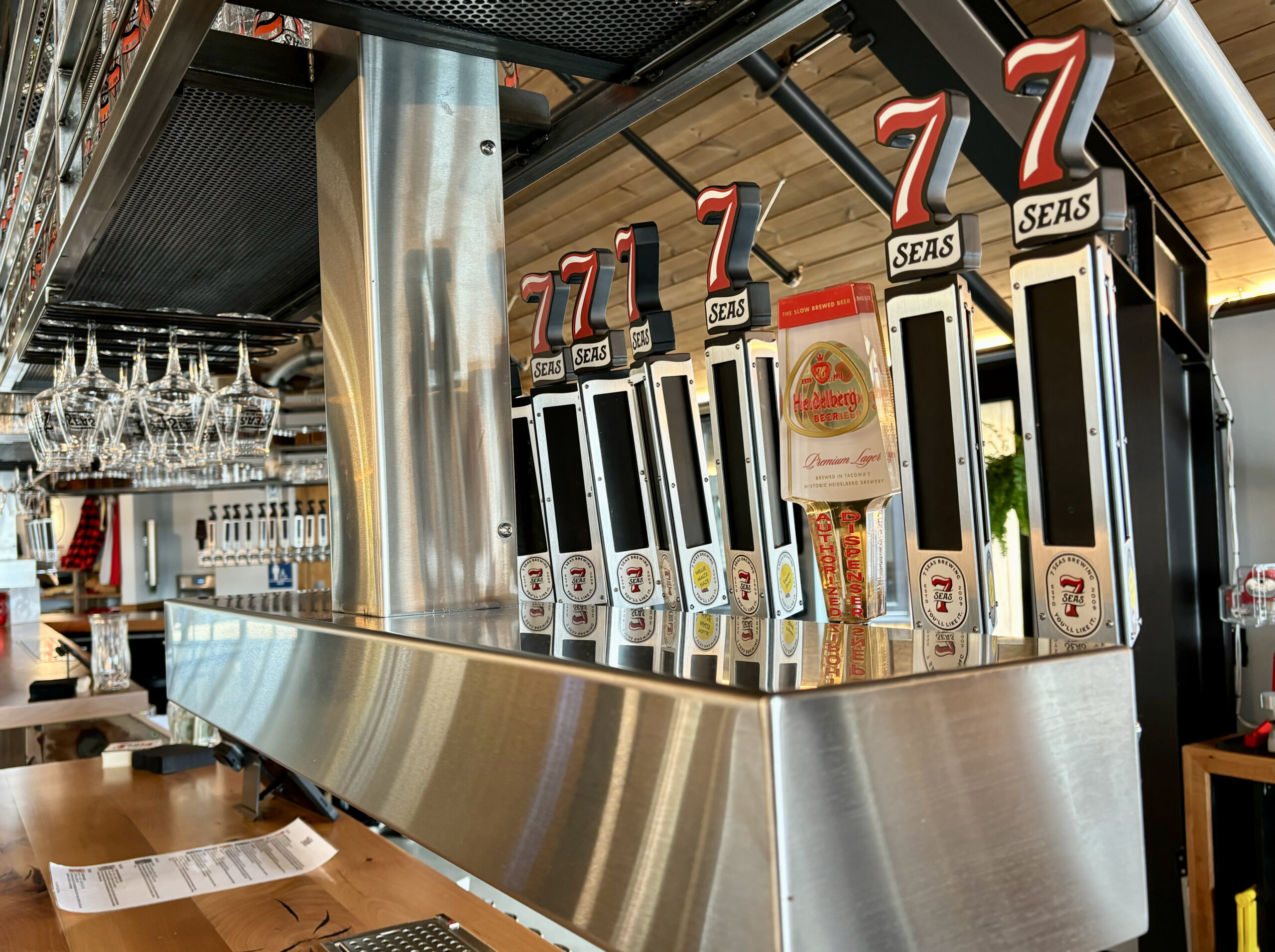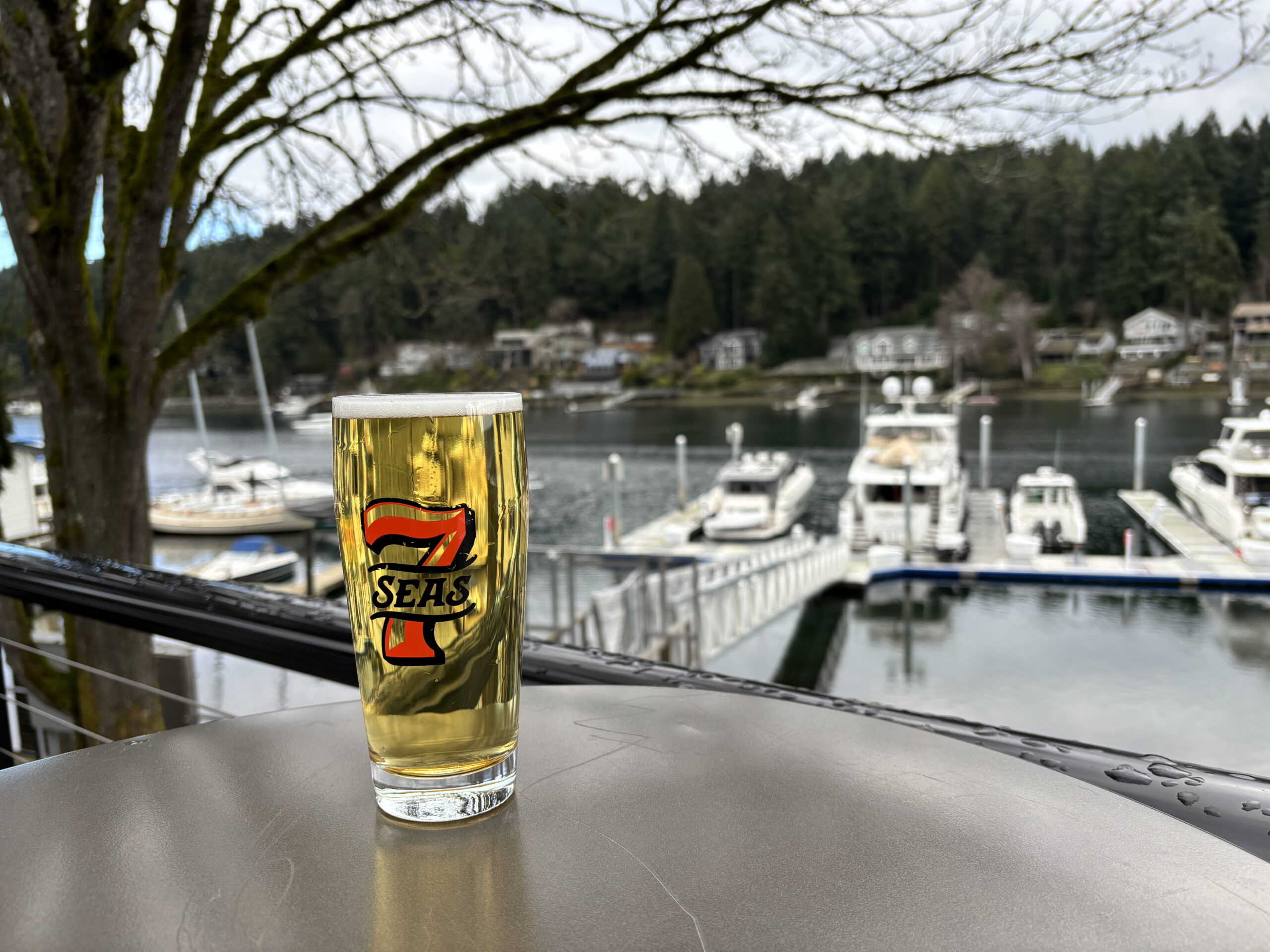Community Government Police & Fire
In the Margins | Amid our booze bonanza, let’s get sober on drunk driving
I was arrested for drunk driving about 35 years ago.
Community Sponsor
Community stories are made possible in part by Peninsula Light Co, a proud sponsor of Gig Harbor Now.
True story: A Gig Harbor police officer ran me through the curbside test for sobriety — I failed. He handcuffed me in front of W.B. Scotts restaurant (now Bella Femmina) on Harborview Drive and invited me to the back seat of his patrol car. I was processed at the police station and detained in a holding cell. I was allowed a phone call, a black coffee, and some Tylenol.
Oddly, my blood-alcohol concentration (BAC) was not even close to the legal threshold for driving under the influence (DUI). Based on state law, I was not drunk. Based on physical condition, I was wasted. I was in no shape to drive.
Fortunately, this self-induced experience with DUI was a staged exercise in cooperation with local police and the newspaper where I worked during those years.
Our community had suffered from several recent DUI incidents, some involving high school students, and I wanted to understand the realities of our DUI laws. How might my own tendency of having a couple beers after my work week translate into some level of impaired driving?

Taps at 7Seas Brewery in Gig Harbor. Photo by Chris Phillips
My deliberate brush with BACs
Beginning in 1979 and until 1999, our state defined DUI based on a blood-alcohol level of 0.10. Research showed that most drivers become impaired well before they reach that BAC. In 1999, our state lowered the threshold to 0.08, where is stands today. And again, much research — including my own makeshift experiment — showed that many drivers are dangerously impaired well before their measurable BAC becomes the issue.
If I recall my experiment – it’s a bit fuzzy three decades later – I drank several 12-ounce beers on a mostly empty stomach in about an hour’s time. I added a cocktail and some pretzels for good measure. When I emerged from the bar, my speech was slurred, my eyes were glassy, my walking was less than elegant, and the jokes I was unloading on my accompanying colleague were increasingly cringe-worthy.
Even with this blatant evidence of drunkenness, my BAC was far from the state’s DUI threshold. I’ve never been a heavy drinker, but even for those who are more durable drinkers, the law’s definition of DUI seemed to allow far too much leeway for risky impairment.
No shortage of roadside options
Fast forward to 2024. Today, our pint glasses are brimming with inventive craft brews and an endless array of hoppy ales. Gig Harbor is home to an impressive circuit of excellent breweries, taprooms, distilleries, taverns, and other roadside watering holes. Most of today’s cleverly named offerings are far more potent than what was flowing on tap decades ago. The classics of Rainier or Henry Weinhard’s have been upstaged by 7 Seas’ Rude Parrot, Wet Coast’s Brass Rail pale ale, or the Hop Pharm’s Solar Guillotine.
The historic Finholm’s Market now doubles as a popular pub with a dozen rotating beer taps and a hard cider option waiting on the sideline. In Purdy, a refitted bank building is home to The Beer Vault taproom. A neighboring produce stand includes the Local Boys Taproom.
Even the Olalla Bay Market and Landing thankfully has been reincarnated as a popular waterfront taproom and pizza restaurant. All this, and we haven’t even mentioned the wines at Morso Bistro or cocktails at Heritage Distillery. The local ground zero for this surge of drinking choices is The Tides Tavern, where you can still order a tall Rainier to accompany your Super Shrimp Salad.
A beverage bonanza: more access, stronger brews
During the past 10 years, we have experienced an adult-beverage bonanza in Gig Harbor and elsewhere. Local cannabis stores are only a short drive away. With all this abundant access, we have no shortage of ways to unwind, wind up, or chat with a barstool neighbor about whether the Travis Kelce/Taylor Swift matchup will last through the offseason.
We also have the sobering responsibility of preventing impaired driving. Lately we have seen increasing incidents of wrong-way driving catastrophes on I-5 and other highways. Impairment from drinking and drugging continues to tragically crash the party for many people in our community and region. The recent COVID-19 hibernation has been followed by a social hangover where road rage and automotive recklessness are commonplace.
Given this backdrop, it’s not surprising that state legislators are considering another gut check with the legal threshold for DUI. Sen. John Lovick, a Democrat from Snohomish County, was a state trooper for 31 years and served in the Coast Guard for 13 years. This year he sponsored a bill (SB 5002) to lower the DUI blood-alcohol legal limit from 0.08 to 0.05, a 37.5 percent decrease in BAC.
As of mid-February, the bill had moved out of committee but would not survive this year’s legislative session deadlines. It may resurface next January.
No brainer … but no passage
Having recalled the results of my personal experiment with DUI, I naively assumed such a bill would gain broad, bipartisan support — a no-brainer for greater safety and fewer fatalities on our roads. I was wrong. In the world of lawmaking, even the seemingly good ideas can get contentious.
Earlier this year, Rep. Brandy Donaghy, also a Democrat from Snohomish County, proposed a similar bill on the House side of the Legislature. It stalled with little more than committee conversations. Now she is hoping that Sen. Lovick’s bill might add enough traction to allow future consideration of the change.
“People are dying (from DUI), and that needs to stop,” she said. “Sometimes we need a catalyst for how we think about drinking and driving.”

Enjoying a cold one at 7Seas in Gig Harbor.
She believes the change in DUI laws would cause some of us think more carefully about driving after drinking. She also believes lowering the DUI limit would not necessarily impose greater burdens on police officers because most roadside stops are governed by how drivers are operating their vehicles.
Gig Harbor’s Police Chief Kelly Busey agrees that a lower DUI threshold could get some people to think more carefully about their limits. He also confirmed that voluntary roadside sobriety tests are an officer’s first and best step toward probable cause in cases of possible impaired driving violations.
“Anything that helps to reduce car crashes is a good thing,” he said.
Local drop in DUI arrests
But Chief Busey also sees practical hurdles in how the law can be enforced, regardless of what the legislators decide. His police department is short-handed — three vacant job openings for police officers are currently posted. Patrols are focused on retail crime, property theft and other safety issues. He said a Gig Harbor DUI arrest typically takes an officer off the streets for at least 2.5 hours, sometimes up to four hours.
Interestingly, beginning in 2020, the number of DUI arrests within Gig Harbor’s city limits dropped dramatically from about 90 per year to about 30 per year. The most recent high was 140 DUI arrests in 2016. Busey acknowledges that the recent decline in DUIs is likely affected by COVID closures and time available for traffic patrols.
On the other hand, Sen. Lovick testified that about half of the state’s 745 traffic deaths in 2022 were DUI-related. “I think it’s time that we do something. Drunk driving is a choice. Drunk driving collisions are preventable,” he told the state Transportation Committee.
Fair to vendors
Practical constraints for law enforcement are also top of mind for Rep. Michelle Caldier, a local Republican lawmaker in the 26th District (Peninsula area and Kitsap County).
She had a family member who died in a DUI incident. She also sees two shortcomings in the 0.05 law: Police are already hamstrung by workforce shortages, and vendors at bars and restaurants fear the law is a liability burden.
“We need to keep drinkers off the roads, but we also need to be fair to vendors,” she said. “I don’t think people know if someone is 0.05 or not.”
Her suggested alternative is to develop greater awareness by providing readily available and voluntary blood-alcohol breath testers at drinking establishments. Technology is now available to make self-testing for DUI a more socially accepted practice.
No shortage of differing views
The debate on this issue is as divided as the Chiefs vs. 49ers game strategies during overtime.
The Washington Traffic Safety Commission says that lowering the DUI limit to 0.05 percent will curb impairment, reduce drinking-and-driving tragedies, and align with similar laws in most other industrialized nations.
On the opposing sideline, the restaurant and bar industry has lined up to fend off the lower BAC proposal. At a Jan. 30 hearing of the state Transportation Committee in Olympia, officials from the Washington Hospitality Association, the Washington Wine Institute, and the Washington Brewers Guild, all urged a no vote on Sen. Lovick’s DUI bill.
“There are no physical signs of intoxication at 0.05,” said Julia Gorton, senior director of government affairs with the Hospitality Association. (Hmm, she clearly did not witness my embarrassing experiment.) “This means that thousands of businesses and our employees will lack the tools to adjust to the … reduction in the (DUI) threshold. But we will still be liable for that behavior.”
Speaking for wineries, Josh McDonald, executive director of the Washington Wine Institute, told legislators that the bill “will not prevent the high-BAC, repeat offenders from continuing to drive impaired.”
And speaking for craft breweries, Daniel Wilson of the Washington Brewers Guild (7 Seas is a member), said that “lowering the BAC level without any training or tools to identify an individual who has reached 0.05 limit would put both our breweries and their staffs at risk.”
Watch for this issue to go into overtime
So, much like the recent Super Bowl, this battle over BAC might eventually go into overtime. The clock has run out on this year’s effort. Hopefully we can devise a plan that allows for stricter drunk driving laws, enforceable procedures for cops, and reasonable safeguards for those who are tending bar and serving the beverages.
Doing nothing is not a game plan. Some version of prudent change is needed if we expect to create better accountability on both sides of the bar. Our challenge is to jump-start a cultural change that respects the growth industry of breweries, wineries and related hospitality destinations while also preventing the heartbreak of DUI-related fatalities and injuries. That’s a tricky pour.
Amid all the debate and testimony, we need to remember the lives that have been unnecessarily ended or shattered because of someone’s bad decision to drink/drug and drive. Many years ago, my curious personal experiment with DUI left me with a serious realization that sticks with me today – I’m a lightweight and should drink accordingly. We need to focus on impairment as the demon. We need to remember that the rules are an important part of the game, and the penalties for breaking the rules should be severe.

Christopher Phillips, a Gig Harbor community member since 1981 and former managing editor of The Peninsula Gateway, is a retired journalist and communications executive who worked for Russell Investments, the Port of Tacoma, and the Washington State Investment Board. His column, In the Margins, explores our community’s people, places and experiences, some of which might not otherwise come to our attention. Suggestions are welcome at [email protected].

